Property Geek
We provide the actual and accurate information with unbiased user driven reviews to our viewers, to help them see the best and find the best!
View posts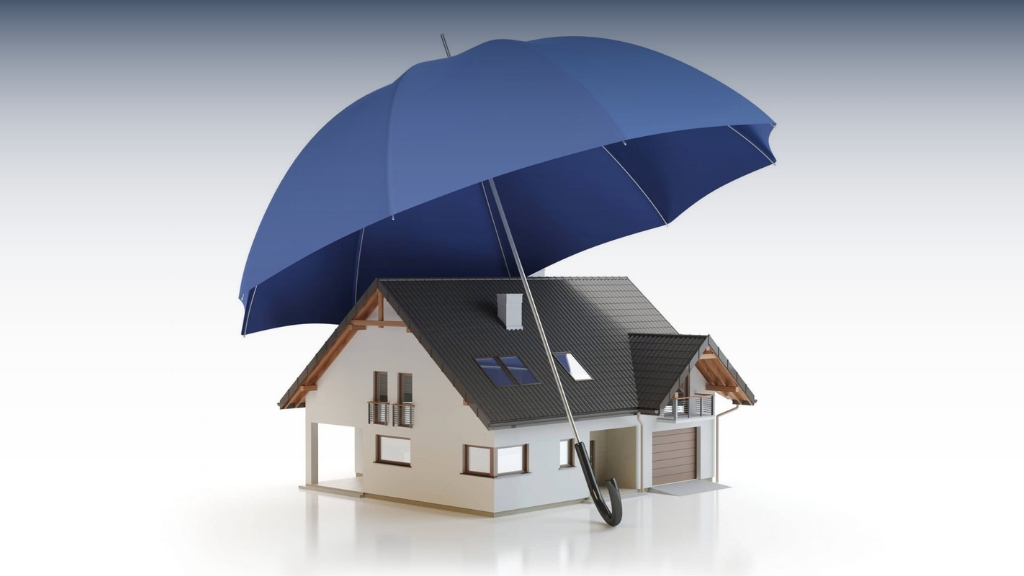
Indian houses usually have reinforced cement concrete (RCC) roofs and such structures always show signs of corrosion of steel bars and degradation of a matrix over time. Terrace proofing, otherwise known as waterproofing roof, is the best way to prevent water from corroding your roof and the bars that reinforce it.
Waterproofing is the best way to secure a surface from water damage. If you have a flat roof, called a terrace, it may be prone to waterlog and water leakage in the long run. In the case of sloping roofs, rainwater flows out through a drainage system and that keeps your roof from cracks, structural damage, and leaks.
So what do flat roof owners do? Follow these roof waterproofing solutions that will protect their beautiful terraces and give them a worry-free season.
Before finding out the solution to waterproofing your roofs, let’s read more about what makes a waterproof sealant so important for flat roofs. Terraces face the burn of all climates and weather and eventually, they will crack and leak water. Here’s what roof waterproofing will help you in:
Improves the life of furniture and interiors: Mold and mildew can not only affect your health but also ruin the quality of furniture and decor. Once there is no moisture wicking away the quality of air in your house, your furniture and interiors stay as intact as new.
There are 3 methods of waterproofing your roof traditionally:
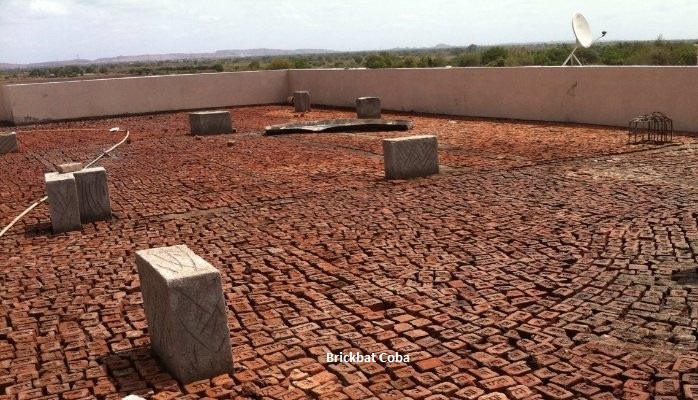
This is one of the earliest methods of waterproofing a flat roof that is prone to waterlogging. Flat bricks are laid 15 mm to 20 mm apart from each other and fixed to the surface of the roof with cement. It must be allowed to dry and then sealed with a special mixture containing water sealant, water, and cement. The gaps between the bricks are also filled to create a leveled seal. Now the roof must be cured by water and left to dry for at least 2 weeks.
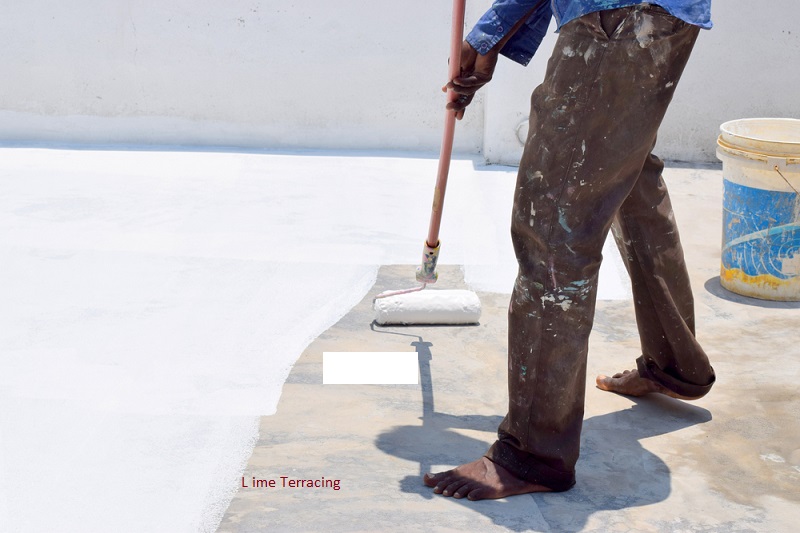
This type of roof waterproofing is similar to the brickbat coba method. The only difference is in the mixture used to seal the laid bricks. Here the concrete is laid on the surface of the roof and every time a layer is spread, a mix of lime molasses is sprinkled on top of it. The finished roof is cured with water regularly for at least 2 weeks.
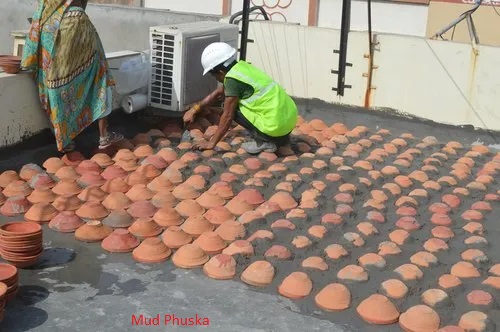
Hotter regions in India use the mud phuska method of waterproofing, mostly to keep their houses cool. This is an eco-friendly method of waterproofing because of the natural ingredients used in it. Mud, cow dung, bhusa sand, and clay are used in the process to get a perfect waterproofed roof. Clay and bhusa sand are used to make molds (which act as bricks here) and plastered on the surface of the roof. The finished layer is sealed with cow dung and mud and left to be cured.
With the growth of the civil industry, methods of waterproofing have also taken a modern twist. As usual, they are more effective, less time-consuming, and have a clean finish. Here are 3 types of modern roof waterproofing methods:
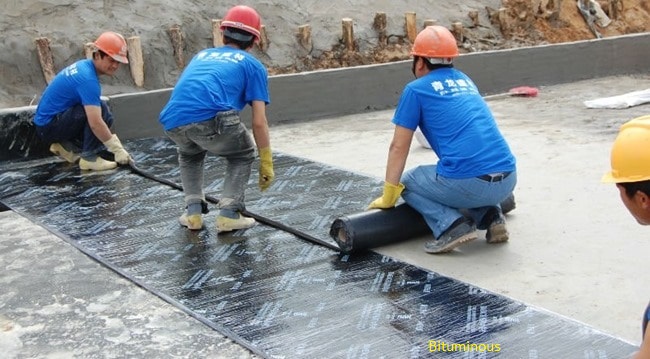
Bitumen is a form of petroleum liquid that is viscous and sticky. It is the perfect material for waterproofing because of its natural properties. A roofing felt is soaked with this sticky form of liquid petroleum and rolled out on the roof. Fire is used to fix it to the roof and maybe other ingredients are added to make it more reliable.
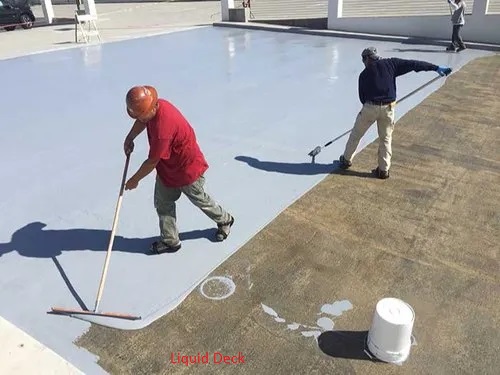
This type of modern roof waterproofing solution uses hydrophobic liquid to coat the surface of the roof. The liquid used is a kind of easy-to-use, stretchable, and flexible elastomer. Glass is added to the liquid to make it more strong and increase its waterproofing ability. You may apply this liquid on all kinds of surfaces like bitumen, asphalt, and concrete.
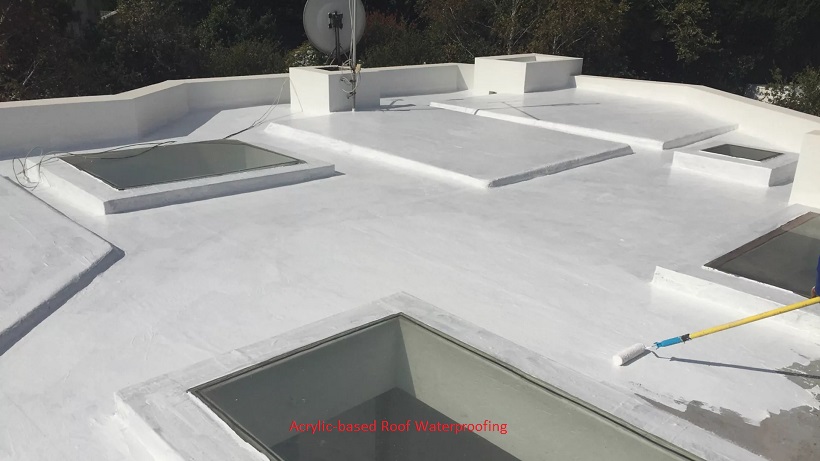
This is a popular method nowadays as it can be applied evenly with ease. The finish is also smooth and clean with high tensile strength. It is also UV resistant and resists the growth of all kinds of fungi, molds, and algae. Apply it with a roller and you are good to go. This non-toxic roof waterproofing method comes in different colors too (aesthetics, right?)
Planning to build a house? Roof waterproofing is something you need to take care of. A raw roof can make moisture seep in through the terrace and lead to excessive growth of mold. Mold can make your house’s air quality low and spoil your health (fever, wheeziness, infections, and whatnot). Flat terraces need to be waterproofed because they have no way of draining rainwater. Choose cost-effective (if possible, eco-friendly) ones that fit the material of the roof you have.
EPDM rubber is the best waterproofing for roofs. The material is available with membranes in two thicknesses:
● 60 mils
● 45 mils
The best way of waterproofing an old roof depends on its age and surface conditions. But Polyurethane coating is the best option. Before applying it, clean the surface with wire brushing and fill in all the exposed cracks.
DAVCO K10 PU PLUS works well on metal roofs. It has viscous and elastomeric polyurethane co-polymers in it that prevent water leakage.
SPF, also known as Sprayed Polyurethane Foam, is one of the longest-lasting roof coating materials. Most SPF systems stand sturdy for at least 50 years.
The waterproofing system should last anytime between 10 to 15 years. Make sure you get the best roof waterproofing products so that there are no water leakages.